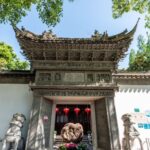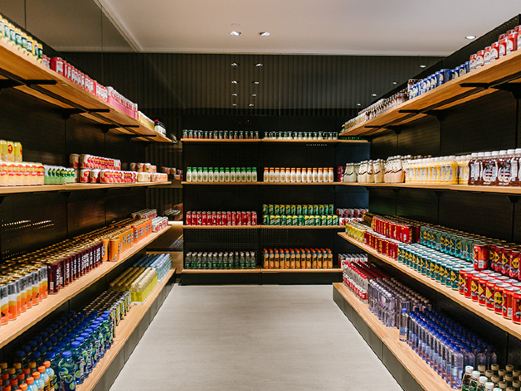The former residence of Zhang Shiming, also known as Yide Hall, is a large mansion built by Zhang Junheng, the grandson of Zhang Songxian, one of the ‘Four Elephants’ of Nanxun and a wealthy man in the south of the Yangtze River. It is one of the rare mansions of powerful families in the south of the Yangtze River that basically maintains the historical appearance of the Ming and Qing Dynasties. It is a classic building of a combination of Chinese and Western styles and is known as ‘the first private residence in the south of the Yangtze River’. The Zhang residence is built along the ancient Xunxi River. It is a five-entry courtyard with 150 Chinese and Western-style rooms. Although it is a large mansion, its exterior is unpretentious. A square doorway is opened on the plain white high wall, which is the gate of the courtyard. However, after entering the foyer, a classical world full of delicate decorations appears in front of you. The gate tower, walls, pillars, frames, rafters, doors, and windows are ingeniously conceived and elegant in style. Thousands of stone carvings, wood carvings, and brick carvings in the shapes of birds, beasts, and flowers are vividly presented. The exquisite craftsmanship is amazing. They are all carvings from the late Qing Dynasty. The French-style lattice doors and windows, stained glass, and French floor tiles add an extremely romantic European style to the entire Zhang residence. The first entry is the front hall. The four characters ‘Zhu Bao Song Mao’ on the lintel were written by the famous person Wu Gankai. The second entry is the hall. The plaque ‘Yide Hall’ was written by Zhang Shiming, who lost his father at an early age, out of respect and gratitude for his mother, and invited Zhang Jian, the number one scholar in the Jiawu year, to write it for his mother. The third entry is the inner hall. The window lattice on both sides of the corridor is embedded with stone carvings of banana leaves, which are vivid. The fourth entry is a Western-style building and Western-style ballroom. Most of the decorative building materials were purchased from France. The wall is inlaid with colorful porcelain paintings, full of Western style. The fifth entry is the back garden and stele corridor, in which 87 stele inscriptions of calligraphy masterpieces of dozens of famous calligraphers in China from Wang Xizhi of the Eastern Jin Dynasty to He Zhuo of the Qing Dynasty are inlaid. It takes only 1 to 2 hours to stroll around the ancient residence. After that, you can walk out of the ancient residence and stroll around the ancient town of Nanxun at will, feeling leisurely. Opening hours: Open all year round from 08:30 to 17:00.
Former Residence of Zhang Shiming
The former residence of Zhang Shiming, also known as Yide Hall, is a large mansion built by Zhang Ju[...]









